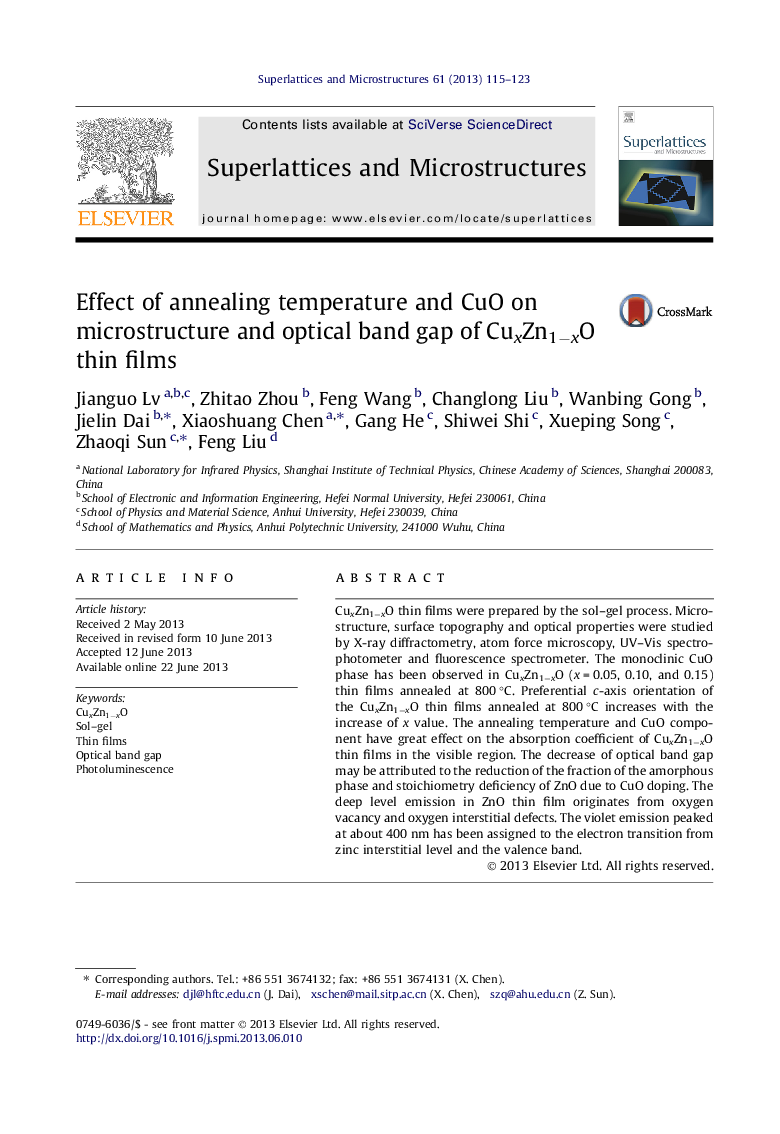| Article ID | Journal | Published Year | Pages | File Type |
|---|---|---|---|---|
| 1553656 | Superlattices and Microstructures | 2013 | 9 Pages |
•Cu concentrations enhance preferential c-axis orientation CuxZn1−xO thin films.•The optical band gap and PL spectra of CuxZn1−xO thin films were studied.•Effect of Cu concentrations on optical band gap has been reported.•We report the photoluminescence mechanism of CuxZn1−xO thin films.
CuxZn1−xO thin films were prepared by the sol–gel process. Microstructure, surface topography and optical properties were studied by X-ray diffractometry, atom force microscopy, UV–Vis spectrophotometer and fluorescence spectrometer. The monoclinic CuO phase has been observed in CuxZn1−xO (x = 0.05, 0.10, and 0.15) thin films annealed at 800 °C. Preferential c-axis orientation of the CuxZn1−xO thin films annealed at 800 °C increases with the increase of x value. The annealing temperature and CuO component have great effect on the absorption coefficient of CuxZn1−xO thin films in the visible region. The decrease of optical band gap may be attributed to the reduction of the fraction of the amorphous phase and stoichiometry deficiency of ZnO due to CuO doping. The deep level emission in ZnO thin film originates from oxygen vacancy and oxygen interstitial defects. The violet emission peaked at about 400 nm has been assigned to the electron transition from zinc interstitial level and the valence band.
